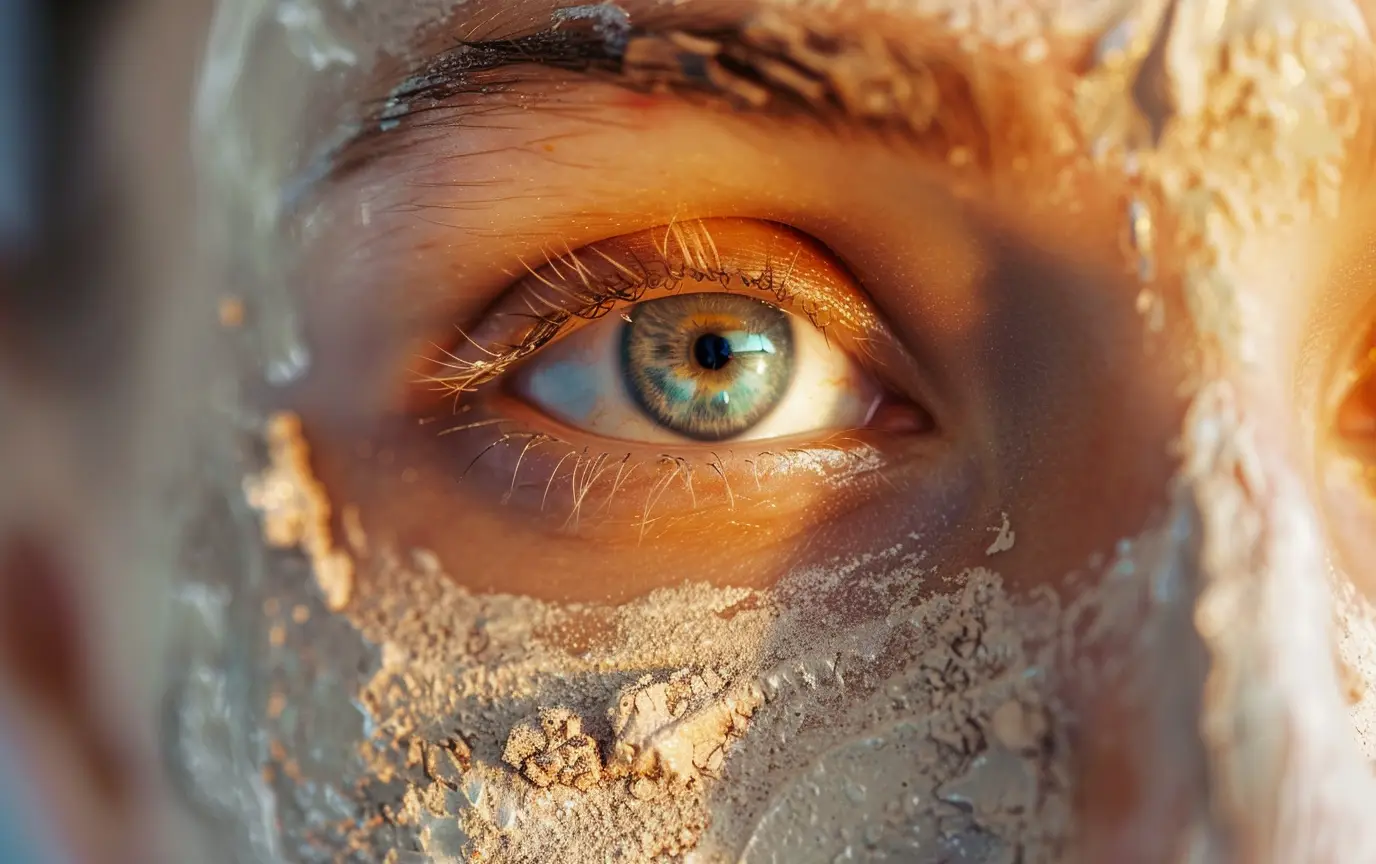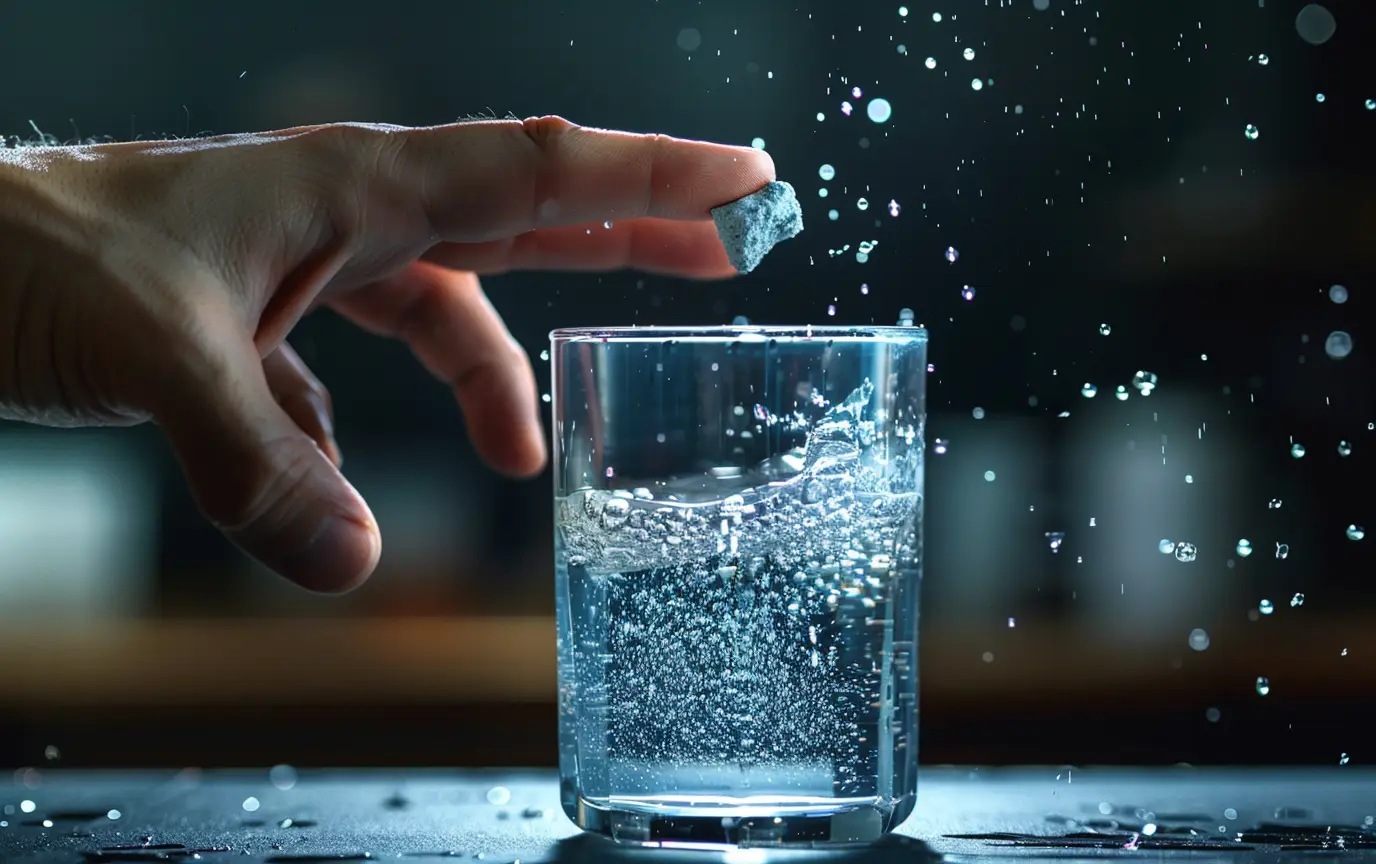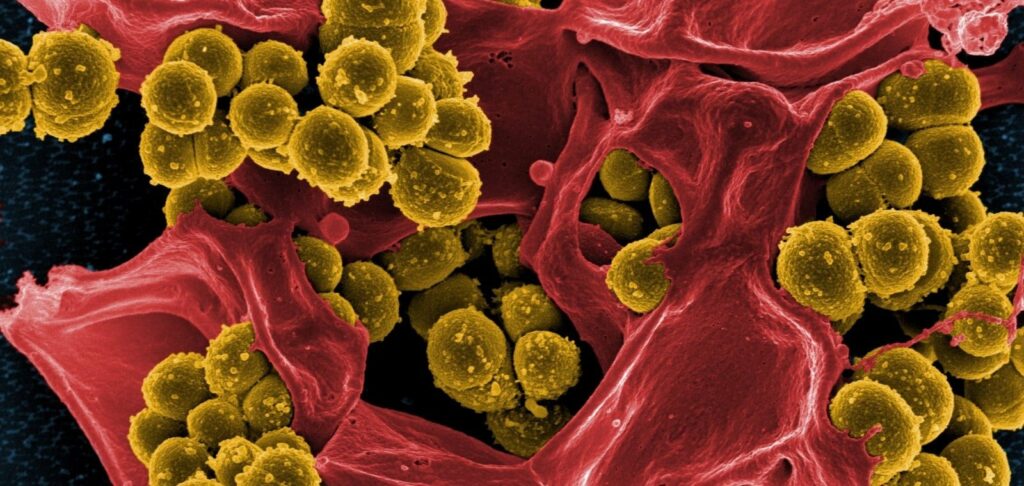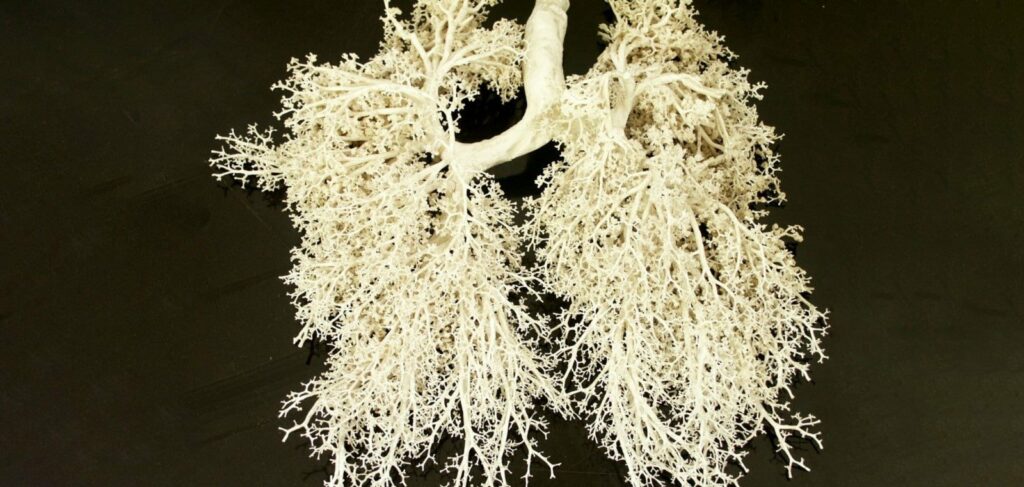

Clay is one of the oldest natural remedies used by humanity throughout millennia.
In the countries of the former USSR, clay therapy has a rich tradition and is still actively used in sanatoriums and health resorts across Russia, Ukraine, Kazakhstan, Central Asia, and the Caucasus.
This ancient healing method harnesses the remarkable therapeutic properties of clay, a natural mineral that has stood the test of time. From the earliest civilizations to modern-day spas, clay has been revered for its ability to cleanse, nourish, and rejuvenate the body.

The versatility of clay is truly astounding. It can be taken internally to detoxify the digestive system, applied externally as compresses or poultices to alleviate pain and inflammation, or used in baths and cosmetic treatments to promote radiant skin and overall well-being.
But what makes clay so special? The answer lies in its unique mineral composition and structure. Clay is formed over millions of years through the gradual erosion of rocks, resulting in a fine-grained material that is rich in essential minerals such as silica, aluminum, magnesium, calcium, and iron.

These minerals, when absorbed by the body, offer a wide range of health benefits. They help to balance pH levels, boost immunity, improve circulation, and promote the elimination of toxins. The negative ionic charge of clay particles also enables them to bind to positively charged toxins, heavy metals, and impurities, drawing them out of the body like a powerful magnet.
But the benefits of clay don’t stop there. This incredible substance has been found to have antibacterial, antiviral, and anti-inflammatory properties, making it an effective natural remedy for a variety of skin conditions, digestive issues, and even chronic diseases.

So, whether you’re looking to detoxify your body, alleviate pain, improve your skin, or simply promote overall health and well-being, clay therapy may hold the key. Join us as we delve deeper into the fascinating world of clay and discover how this humble mineral can transform your health and vitality.
Get ready to be amazed by the healing power of nature’s own wonder drug – clay!

Which Diseases are Treated with Clay?
Clay is renowned for its incredibly diverse range of therapeutic applications. It can be used both externally and internally to treat a wide array of diseases and conditions, making it a versatile natural remedy.

Some of the most common uses of clay include:
- Musculoskeletal disorders: Clay can help alleviate pain and inflammation associated with conditions like arthritis, osteoarthritis, osteochondrosis, radiculitis, rheumatism, and injuries.
- Gastrointestinal issues: Clay is effective in treating various digestive problems, such as gastritis, ulcers, colitis, dysbiosis (imbalance of gut bacteria), and constipation.
- Skin diseases: Applied topically, clay can help soothe and heal skin conditions like eczema, psoriasis, acne, wounds, and burns.
- Inflammatory conditions: Clay has anti-inflammatory properties that can help treat conditions such as prostatitis, adnexitis (inflammation of the uterine appendages), mastitis (breast inflammation), sinusitis, and others.
- Cardiovascular diseases: Clay can be used to address issues related to the circulatory system, including atherosclerosis, varicose veins, and thrombophlebitis (inflammation of a vein caused by a blood clot).
- Endocrine disorders: Clay has been used to help manage endocrine disorders such as obesity, diabetes, and thyroid gland issues.
- Oncological diseases: Some studies suggest that clay may have potential benefits in the treatment of certain cancers, although more research is needed in this area.
- Intoxications: Clay can help remove toxins from the body, including those caused by alcohol and drug use.
- Allergies and immunodeficiencies: Clay’s ability to detoxify and balance the body may help alleviate symptoms of allergies and boost the immune system.
In addition to its medicinal uses, clay is also widely utilized in cosmetics for its ability to cleanse, nourish, and rejuvenate the skin. Its detoxifying and mineralizing properties make it an excellent natural ingredient in many skincare products and treatments.

Which Clay is the Most Healing?
The most healing type of clay is considered to be blue Cambrian clay, found in the Pskov region of Russia. This unique clay was formed around 500 million years ago during the Cambrian period and is renowned for its incredibly rich mineral composition.
Blue Cambrian clay contains an array of essential elements in a highly bioavailable form, including silicon, calcium, aluminum, magnesium, iron, potassium, sodium, phosphorus, manganese, copper, cobalt, zinc, molybdenum, and vanadium. This diverse mineral profile contributes to its potent therapeutic properties, making it a valuable resource for various health and wellness applications.

In addition to blue Cambrian clay, other types of clay also offer distinct benefits:
- White clay (kaolin) is a traditional ingredient in cosmetic products. Its gentle nature makes it suitable for even the most sensitive skin types. White clay effectively absorbs excess sebum and provides a mild exfoliating effect, promoting a clearer, more refined complexion.
- Green clay is particularly beneficial for oily skin due to its strong absorbent, anti-inflammatory, and antibacterial properties. It helps to regulate sebum production, soothe irritation, and combat blemish-causing bacteria, resulting in a more balanced and clearer skin tone.
- Red clay is rich in iron, which improves blood circulation in the skin. This increased blood flow nourishes the skin cells and promotes a healthy, radiant glow. Additionally, red clay has been shown to alleviate allergic reactions, making it a helpful option for those with sensitive or reactive skin.
While each type of clay offers unique advantages, blue Cambrian clay stands out for its exceptional mineral content and powerful therapeutic potential. Its rare combination of elements and long geological history contribute to its status as the most sought-after healing clay.

Which Clays Relieve Inflammation?
Blue and green clays are known for their strong anti-inflammatory properties, making them effective in managing various inflammatory conditions. When applied as compresses or poultices, these clays can help alleviate symptoms associated with arthritis, bursitis, mastitis, prostatitis, sinusitis, and other inflammatory disorders.
The powerful anti-inflammatory effects of blue and green clays can be attributed to their unique mineral compositions. Blue clay, particularly the highly prized blue Cambrian clay, is rich in a wide array of bioavailable minerals, including silicon, calcium, magnesium, iron, and potassium. These minerals work synergistically to reduce inflammation, promote healing, and restore balance to affected areas.
Similarly, green clay contains a high concentration of minerals such as iron, magnesium, calcium, potassium, and sodium. These elements contribute to its ability to draw out toxins, reduce swelling, and soothe irritated tissues. Green clay also possesses antibacterial properties, which can help combat infection and prevent the further spread of inflammation.
When using blue or green clay for inflammatory conditions, the clay is typically mixed with water to form a thick paste. This paste is then applied directly to the affected area and left in place for a specified period, usually ranging from 20 minutes to an hour. The clay works by absorbing excess fluids, reducing swelling, and promoting circulation to the targeted region, ultimately encouraging the body’s natural healing processes.
In addition to their topical application, blue and green clays can also be consumed orally in small amounts to help reduce inflammation throughout the body. However, it is essential to consult with a healthcare professional before ingesting any type of clay, as some may contain impurities or interact with certain medications.
How is clay beneficial for joints?
Clay offers numerous benefits for joint health, providing pain relief, anti-inflammatory effects, and promoting regeneration. Compresses made with blue or green clay are commonly used to treat conditions such as arthritis, osteoarthritis, and bursitis. The unique properties of these clays contribute to their effectiveness in supporting joint health and alleviating associated symptoms.
One of the primary benefits of clay for joints is its ability to reduce inflammation. Both blue and green clays possess potent anti-inflammatory properties, helping to soothe swollen and irritated joints. By drawing out excess fluids and toxins from the affected area, clay compresses can effectively reduce swelling and alleviate pain.
In addition to its anti-inflammatory effects, clay also promotes improved circulation and nutrient delivery to the joint tissues. The minerals present in blue and green clays, such as silicon, calcium, magnesium, and iron, play a vital role in nourishing the cartilage, ligaments, and surrounding structures. Enhanced blood flow and nutrient supply facilitate the repair and regeneration of damaged joint tissues, supporting the body’s natural healing processes.
Clay compresses have also been shown to accelerate the recovery of cartilage tissue within the joints. The unique mineral composition of blue and green clays stimulates the production of collagen and other essential components of healthy cartilage. By providing the necessary building blocks and creating an optimal environment for tissue repair, clay can help slow down the progression of degenerative joint conditions and promote the restoration of smooth, pain-free movement.
To use clay for joint health, a compress can be prepared by mixing the chosen clay with water to form a thick paste. The paste is then applied to the affected joint and covered with a cloth or wrap. The compress is typically left in place for 20 to 60 minutes, allowing the clay to work its therapeutic magic. Regular application of clay compresses can provide ongoing support for joint health, reducing inflammation, relieving pain, and promoting tissue regeneration.
It is worth noting that while clay compresses offer a safe and natural approach to joint care, individuals with severe or persistent joint issues should consult with a healthcare professional for proper diagnosis and treatment. Clay therapy can be used in conjunction with other recommended treatments to optimize joint health and overall well-being.

How is clay beneficial for the body?
Clay offers a wide range of health benefits for the body, providing a comprehensive healing effect:
- Detoxification: Clay helps to remove toxins, heavy metal salts, and radionuclides from the body, promoting overall cleansing and purification.
- Antimicrobial properties: Clay possesses antibacterial and antiviral properties, aiding in the fight against harmful microorganisms and supporting the body’s natural defenses.
- Acid-base balance: Clay helps to normalize the body’s acid-base balance, ensuring optimal pH levels for various physiological processes.
- Mineral replenishment: Clay is rich in essential minerals that can help to replenish any deficiencies in the body, supporting overall health and well-being.
- Hematopoiesis stimulation: Clay has been shown to stimulate the production of blood cells, contributing to a healthier circulatory system.
- Improved metabolism: Clay can enhance metabolic processes, facilitating the efficient utilization of nutrients and energy within the body.
- Immune system support: Clay has immune-boosting properties, helping to strengthen the body’s natural defense mechanisms against disease and infection.
- Gastrointestinal health: Clay can help to normalize the function of the gastrointestinal tract, promoting healthy digestion and nutrient absorption.
- Wound healing: When applied topically, clay can accelerate the healing of wounds and ulcers, promoting tissue repair and regeneration.
- Anti-aging effects: Clay has been associated with anti-aging properties, helping to rejuvenate the body and promote a more youthful appearance.
The unique mineral composition and therapeutic properties of clay make it a valuable natural remedy for supporting various aspects of health. Whether consumed internally or applied externally, clay can contribute to detoxification, immune support, digestive health, and overall well-being.
How does clay cleanse the body?
Clay possesses powerful absorbing properties that enable it to cleanse the body thoroughly. Much like a sponge, clay can soak up and remove harmful substances from the body, including toxins, waste products, heavy metal salts, radionuclides, metabolic byproducts, and pathogenic microorganisms.
When clay is ingested, it works at a cellular level to purify the body. As the clay travels through the digestive tract, it attracts and binds to various toxins and impurities, preventing their absorption into the bloodstream. The clay forms a complex with these harmful substances, rendering them inactive and facilitating their elimination from the body through natural excretory processes.
In addition to its absorptive capacity, clay also has a strong ionic charge that allows it to exchange ions with the surrounding environment. This ion exchange process helps to balance the body’s pH levels and promote a more alkaline state, which is essential for optimal health and disease prevention.
The detoxifying properties of clay extend beyond the digestive system. When applied topically, clay can draw out toxins and impurities from the skin, helping to unclog pores, reduce inflammation, and promote a clearer, healthier complexion. Clay baths and body wraps can also be used to facilitate systemic detoxification, as the clay can absorb toxins released through the skin.
It is important to note that while clay is a natural and effective detoxifying agent, it should be used with caution. High-quality, pure clay from reputable sources should be used to minimize the risk of contamination or adverse reactions. Individuals with sensitive digestive systems or pre-existing medical conditions should consult with a healthcare professional before consuming clay internally.
Incorporating clay into a comprehensive detoxification protocol, along with a balanced diet, adequate hydration, and regular exercise, can support the body’s natural cleansing mechanisms and promote overall health and well-being.
How does clay affect the liver?
Clay possesses hepatoprotective properties that can greatly benefit liver health. It helps to cleanse and regenerate liver cells, enhances the organ’s detoxification function, and prevents the development of cirrhosis, a serious condition characterized by scarring of the liver tissue.
When ingested, clay works to purify the liver at a cellular level. It binds to toxins, heavy metals, and other harmful substances that can accumulate in the liver over time, facilitating their elimination from the body. By reducing the toxic burden on the liver, clay allows this vital organ to function more efficiently in neutralizing and removing toxins from the bloodstream.
In addition to its detoxifying effects, clay also supports the regeneration of liver cells. The mineral content of clay, including silica, aluminum, and magnesium, plays a crucial role in promoting cell repair and regeneration. These minerals provide the building blocks necessary for the liver to create new, healthy cells and repair damaged ones, ultimately improving overall liver function.
The use of clay, both internally and externally, has been found to be beneficial for various liver conditions, such as hepatitis, cirrhosis, and fatty liver disease. Oral consumption of clay can help to detoxify the liver and support its normal functioning, while clay compresses applied to the liver area can promote localized healing and regeneration.
What is medicinal clay called?
Medicinal clay, also known as therapeutic clay, is referred to by different names depending on its color and the location of its deposit. These names often reflect the unique mineral composition and properties of each type of clay. Some of the most common types of medicinal clay include:
- 1. Kaolin (White Clay): Kaolin is a soft, white clay that is rich in kaolinite, a naturally occurring mineral. It is known for its gentle cleansing and exfoliating properties, making it a popular choice for skincare products. Kaolin is also used internally to treat digestive issues and promote detoxification.
- 2. Bentonite (Blue Clay): Bentonite is a type of blue clay that is composed primarily of montmorillonite, a mineral with a high absorption capacity. It is prized for its ability to draw out toxins, heavy metals, and impurities from the body. Bentonite is commonly used in detoxification protocols, as well as for treating skin conditions and digestive disorders.
- Montmorillonite (Green Clay): Montmorillonite is a green clay that is rich in minerals such as magnesium, calcium, and potassium. It is known for its powerful detoxifying and remineralizing properties. Montmorillonite is often used in skincare products, as well as for internal use to support digestion, immune function, and overall health.
- Glauconite (Blue-Green Clay): Glauconite is a blue-green clay that is formed from the mineral glauconite, which is rich in iron and potassium. It is valued for its ability to stimulate circulation, promote wound healing, and support skin health. Glauconite is often used in cosmetic products and for topical applications to address various skin concerns.
Other types of medicinal clay include illite, French green clay, Rhassoul clay, and Fuller’s Earth, each with its own unique composition and therapeutic properties.
How long should clay be kept on the body?
The duration of clay therapy sessions depends on the method of application and the specific condition being treated. Here are some general guidelines for various clay therapy techniques:
- Compresses and poultices: Clay compresses and poultices are typically left on the skin for 1-2 hours, allowing the clay to work its therapeutic magic. In some cases, such as for chronic conditions or overnight treatment, the compress may be left on for an extended period or even overnight. It is important to listen to your body and remove the compress if you experience any discomfort.
- Clay baths: When taking a clay bath, the recommended duration is usually between 15-30 minutes. This allows enough time for the clay to interact with the skin and provide its detoxifying and mineralizing benefits. Longer sessions may be warranted for certain conditions, but it is essential not to overdo it and to stay hydrated during the process.
- Facial masks: Clay facial masks are generally applied for 15-20 minutes, or until the clay has fully dried. This timeframe is sufficient for the clay to absorb excess oil, unclog pores, and deliver its nourishing minerals to the skin. Leaving the mask on for too long can lead to excessive drying or irritation, so it is crucial to follow the recommended duration.
- Internal use: When consuming clay internally, it is typically done in courses lasting 1-3 weeks, depending on the specific health goals and the guidance of a healthcare professional. The duration and frequency of internal clay consumption may vary based on individual needs and the type of clay being used. It is essential to start with small doses and gradually increase as tolerated, while staying well-hydrated throughout the course.
It is important to note that these are general guidelines, and the optimal duration of clay therapy may vary depending on individual factors, such as skin sensitivity, overall health status, and the specific condition being addressed.
How does clay affect the blood?
Clay has a profound impact on blood health, offering multiple benefits that can improve overall circulation and well-being. Here’s how clay positively influences the blood:
- Enhances blood composition: Clay has been shown to improve the overall composition of the blood. It helps to increase hemoglobin levels, which is essential for the blood’s ability to carry oxygen throughout the body. Additionally, clay can normalize the erythrocyte sedimentation rate (ESR), a marker of inflammation in the body.
- Stimulates hematopoiesis: Clay contains vital minerals such as iron, copper, and cobalt, which play a crucial role in the production of new blood cells. These minerals stimulate hematopoiesis, the process by which the body creates new blood cells in the bone marrow. As a result, clay is often used as a natural remedy for anemia, a condition characterized by a deficiency of healthy red blood cells.
- Blood purification: One of the most significant benefits of clay is its ability to cleanse the blood of toxins and impurities. As clay moves through the body, it absorbs and binds to harmful substances, helping to eliminate them from the bloodstream. This detoxification process helps to maintain the purity and overall health of the blood.
- Improves blood clotting: Clay has been found to have a positive effect on blood clotting, which is essential for wound healing and preventing excessive bleeding. The minerals present in clay, such as calcium and magnesium, contribute to the formation of blood clots, promoting faster healing and reducing the risk of hemorrhage.
To harness the blood-enhancing properties of clay, it can be consumed internally or applied topically in the form of compresses or poultices. When ingested, clay works systemically to purify the blood and provide essential minerals for hematopoiesis. Topical application of clay can help to improve circulation in specific areas of the body, promoting the delivery of oxygen and nutrients to the tissues.
It is important to note that while clay can offer numerous benefits for blood health, it should not be used as a sole treatment for serious blood disorders or conditions.

What type of clay can be taken internally?
When it comes to ingesting clay for its therapeutic benefits, it is crucial to choose high-quality, pure clay that is free from contaminants. The most commonly used types of clay for internal consumption include:
- White clay (kaolin): White clay, also known as kaolin, is a gentle and safe option for internal use. It is known for its ability to soothe the digestive tract, absorb toxins, and promote overall detoxification.
- Blue clay (bentonite): Blue clay, particularly bentonite clay, is highly prized for its powerful detoxifying properties. It has a strong negative ionic charge that allows it to bind to and remove toxins, heavy metals, and other impurities from the body.
- Green clay (montmorillonite): Green clay, often referred to as montmorillonite clay, is rich in minerals such as magnesium, calcium, and potassium. It is known for its detoxifying and remineralizing properties, making it a popular choice for internal use.
When preparing clay for internal consumption, it is essential to mix it with water to create a smooth, liquid consistency similar to that of thin yogurt or kefir. A typical serving size is 1-2 tablespoons of clay mixed with water, taken 2-3 times per day, approximately 1 hour before meals. This timing allows the clay to work effectively in the digestive tract without interfering with nutrient absorption from food.
The recommended course of internal clay consumption usually ranges from 1-3 weeks, depending on individual needs and health goals. It is important to listen to your body and adjust the dosage or duration as needed, and to stay well-hydrated throughout the course to support the body’s natural detoxification processes.
Before starting an internal clay regimen, it is crucial to consult with a qualified healthcare professional, especially if you have pre-existing health conditions, are pregnant or nursing, or are taking medications. They can guide you in selecting the most appropriate type and dosage of clay for your specific needs and ensure its safe use.
When sourcing clay for internal use, always choose reputable suppliers that offer pure, high-quality clay free from contaminants or additives. Properly stored clay can maintain its potency for a long time, but it is essential to discard any clay that has been exposed to moisture, air, or other potential contaminants.
Incorporating internal clay consumption into a holistic wellness plan, along with a balanced diet, adequate hydration, and regular exercise, can support detoxification, digestive health, and overall well-being.
Which clay is the most beneficial for eating?
For internal consumption, blue Cambrian clay is considered the most beneficial. It boasts the richest mineral composition and high bioavailability of trace elements. White and green clays are also used internally but are less effective compared to blue clay.
What are the benefits of drinking clay?
Drinking clay offers a holistic, rejuvenating effect on the entire body. It detoxifies the gastrointestinal tract, liver, blood, and lymph, replenishes mineral deficiencies, enhances digestion, regulates bowel movements, and boosts immunity.
Clay is used to treat various conditions, including:
- Gastritis and colitis
- Dysbiosis
- Constipation
- Toxicity and poisoning
- Anemia
- Atherosclerosis
- Other diseases
Why eat clay?
In certain regions of the world, such as Africa, South America, and India, there is a tradition of consuming clay as part of the diet. This practice, known as geophagy, is believed to help replenish the body’s mineral deficiencies, especially during pregnancy and breastfeeding.
Eating clay is thought to provide essential minerals that may be lacking in the regular diet, particularly in areas where soil quality is poor or food sources are limited. The minerals found in clay, such as iron, calcium, and magnesium, are crucial for maintaining overall health and supporting the increased nutritional demands of pregnant and nursing women.
However, it is important to note that not all clays are safe for human consumption. Only specific food-grade clays that have undergone proper purification processes should be used for ingestion. These clays are carefully sourced and tested to ensure they are free from contaminants, such as heavy metals, bacteria, and parasites, which could pose health risks if consumed.
How to properly drink clay?
To prepare clay for internal consumption, mix it with room-temperature boiled water until it reaches the consistency of thin yogurt or kefir. Thoroughly stir the mixture to ensure the clay is evenly dispersed and free from clumps.
The recommended dosage is 1-2 tablespoons of the clay mixture, taken 2-3 times daily, about an hour before meals. This timing allows the clay to work effectively in the digestive tract without interfering with the absorption of nutrients from food.
It is important to note that you should not drink water immediately after consuming the clay mixture. The clay needs time to work in the digestive system and drinking water right away may dilute its effects.
A typical course of internal clay consumption lasts between 1-3 weeks, depending on your individual health needs and goals. It is crucial to listen to your body and adjust the dosage or duration accordingly. If you experience any discomfort or adverse reactions, discontinue use and consult with a healthcare professional.
Throughout the course of taking clay internally, it is essential to stay well-hydrated by drinking plenty of water between doses. This helps support the body’s natural detoxification processes and ensures the smooth passage of the clay through the digestive tract.
Can edible clay be consumed internally?
Yes, food-grade clay can be consumed internally. It is important to choose high-quality, pure clay specifically labeled as safe for human consumption.
The recommended dosage is usually around 1 teaspoon per day, mixed with water or another liquid until smooth.
Some people believe consuming food-grade clay may provide beneficial minerals and support detoxification, but more research is needed to fully understand its potential benefits and effects on health.
What is the name of the clay that can be eaten?
Clay that is safe for internal consumption is known as medicinal or food-grade clay. It is specially processed and purified to remove impurities, and typically comes in white, blue, or green varieties. You may find it sold under names such as “edible kaolin,” “food-grade bentonite,” “edible montmorillonite,” and so on.
How do people eat edible clay?
Food-grade clay is available in powder or tablet form. To consume the powder, mix it with water until it forms a paste-like consistency. The typical dosage is 1-2 teaspoons per day, taken with meals. If using tablets, the usual recommendation is to take 1-2 tablets three times daily with meals, swallowing them with water. The duration of consumption generally should not exceed 3-4 weeks.
Clay therapy is an effective and safe method of rejuvenating the body, known since ancient times. Clay offers a multifaceted positive impact, cleansing, nourishing, and revitalizing the entire organism. Whether taken internally, used in baths, applied as compresses, or incorporated into cosmetic treatments, the healing power of clay can help you maintain beauty and health for many years to come.
When using clay internally, always ensure you are using a high-quality, food-grade product from a trusted source. Start with small amounts and pay attention to your body’s response. If you notice any adverse reactions, discontinue use. Staying well-hydrated and maintaining a balanced, nutrient-rich diet alongside clay supplementation is important for supporting overall health and well-being.
Medicinal Clays in the Former USSR
The former USSR is home to numerous renowned clay deposits and clay-oriented health sanatoriums, each offering unique therapeutic experiences. From the mineral-rich clays of Russia to the healing muds of Ukraine and Georgia, these natural wonders have been attracting health-seekers for generations.
One of the most famous clay regions is the Tambukan lake area in the Stavropol Krai, Russia. The sulfide-silt muds found here are known for their high content of hydrogen sulfide, minerals, and organic compounds, making them effective in treating a wide range of musculoskeletal, gynecological, and skin conditions.
The Tambukan lake muds are used in many sanatoriums throughout the Caucasian Mineral Waters region, such as the Pyatigorsk and Essentuki resorts.
The Saki lake near Yevpatoria in Crimea is celebrated for its therapeutic muds. The Saki muds are rich in minerals, organic substances, and biologically active compounds that can help to alleviate joint pain, improve skin health, and boost overall well-being. The Saki mud resort, founded in 1828, is one of the oldest and most renowned clay therapy centers in the region.
Georgia boasts the unique Akhtala clay, found near the city of Akhtala in the country’s north. This clay is high in iron, copper, and other minerals, giving it a distinctive blue-green color. Akhtala clay is known for its antibacterial, anti-inflammatory, and wound-healing properties, making it useful in treating skin disorders, digestive issues, and gynecological problems. The Akhtala health resort, located near the clay deposit, offers a range of clay-based treatments and therapies.
Belarus is home to the Sosnovka clay deposit, located near the city of Shklov. This green clay is rich in minerals and is known for its detoxifying and regenerative properties. The Sosnovka health resort, situated near the deposit, offers a variety of clay-based treatments, including baths, wraps, and massage.
These are just a few examples of the many clay deposits and sanatoriums found throughout the former USSR. Other notable destinations include the Karadag clay deposit in Turkmenistan, the Kumisi lake muds in Georgia, and the Chokrak lake muds in Crimea.
Medicinal Clays from Azerbaijan
Being from Azerbaijan, I must point out the well known natural medicines and clays we have here.
One of the most famous medicinal substances in Azerbaijan is Naftalan oil, a unique type of crude oil found in the Naftalan region. While not technically a clay, Naftalan oil is often used in combination with local medicinal clays to create powerful therapeutic formulations. The oil is known for its anti-inflammatory, analgesic, and antimicrobial properties, making it effective in treating skin conditions, joint disorders, and other health issues.
Naftalan clay, found near the Naftalan oil deposits, is believed to share similar healing properties. This clay is rich in minerals and organic compounds that can help to detoxify the body, improve circulation, and alleviate pain and inflammation. Naftalan clay is commonly used in baths, compresses, and other topical applications to treat a wide range of skin and musculoskeletal conditions.
Another notable medicinal clay in Azerbaijan is Duzdagh clay, sourced from the salt mines near Nakhchivan. This clay is high in calcium, magnesium, potassium, and other essential minerals that can help to balance the body’s pH levels, boost immunity, and promote overall well-being. Duzdagh clay is particularly effective in treating respiratory issues, skin problems, and digestive disorders.
In the Lankaran region of Azerbaijan, Gilabi clay is prized for its high sulfur content and other mineral components. This unique clay is known for its antibacterial and antifungal properties, making it useful in treating a variety of skin conditions. Gilabi clay is also used to alleviate joint pain, inflammation, and certain gynecological disorders.
These medicinal clays are an integral part of Azerbaijan’s rich cultural heritage and traditional healing practices. Many spas, health resorts, and sanatoriums throughout the country offer clay-based treatments and therapies, allowing visitors to experience the healing power of these natural wonders firsthand.
As interest in natural and alternative medicine continues to grow, the medicinal clays of Azerbaijan are attracting increasing attention from researchers and healthcare professionals around the world. While more scientific studies are needed to fully understand their therapeutic mechanisms and potential applications, the anecdotal evidence and centuries of traditional use suggest that these clays hold great promise for promoting health and well-being.




